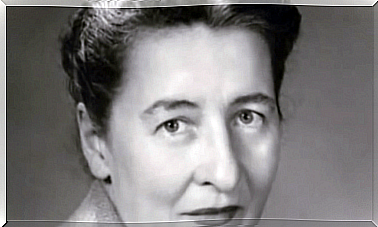Treat Generalized Anxiety Disorder

Anxiety and excessive worrying are symptoms of generalized anxiety disorder (also abbreviated GAD after the English Generalized Anxiety Disorder ). In this regard, Dugas and Ladouceur pointed out that people with GAD are more concerned about thoughtless circumstances. In this article, we will go through various interesting methods of behavioral therapy to treat generalized anxiety disorder.
People with generalized anxiety disorder worry about things that may not even happen and are always on high alert. Therefore, they have more anxiety, difficulty controlling their emotions and always want to control their thoughts.
Cognitive Behavioral Therapy (CBT)
First and foremost, we have Cognitive Behavioral Therapy (CBT), which combines Beck’s therapy with relaxation techniques. Furthermore, clinical research confirms that CBT and relaxation techniques help to treat GAD.
Generic cognitive behavioral therapy consists of:
- To determine the internal and external factors that cause anxiety and how people react to them.
- To control these factors to avoid anxiety.
- Relaxation. There are various techniques, such as progressive relaxation, slow breathing and meditation.
- Cognitive restructuring. The patient identifies thoughts, images and beliefs that are associated with anxiety. Then the Socratic method is used to examine the advantages and disadvantages and to interpret these feelings.
- To gradually expose the patient to internal factors that cause anxiety. This can teach the patient to manage their anxiety properly.

Borkovec’s cognitive behavioral therapy to treat generalized anxiety disorder
Then we have Bokovec’s therapy, which is another therapy to treat generalized anxiety disorder. Borkovec’s CBT includes all elements from generic CBT but also contains two other elements: acceptance and commitment.
- Minimize negative thoughts. The goal is to live in the present without creating false expectations about the future.
- Live in accordance with values. Identify the patient’s values to help them live according to them.
Barlow’s therapy for treating generalized anxiety disorder
Furthermore, another therapy for this is Barlow’s therapy. Brown, O’Leary and Barlow developed a treatment for GAD that consists of identifying the problem, motivating treatment, relaxation, cognitive restructuring, exposure therapy, preventing high alertness and time management.
- Relaxation. Based on Borkovec’s progressive relaxation. However, any other relaxation technique can be used.
- Cognitive restructuring. Explain concepts such as negative thoughts, how they are affected by what is happening in the present and how these interpretations and predictions can affect the patient’s life. In addition, you need to identify these predictions and interpretations in order to question them later.
- Prevent high readiness. The patient must stop being on high alert at all times.
- Time management. Educate the patient in how to set goals and manage their time.
- Problem solving. Problem solving makes it easier to identify problems.
This therapy can consist of an hour-long session once a week and last between 12 and 15 times.
Some modern versions of this treatment include determination treatment, discontinuation of medication, and involvement of the patient’s family.

Duga’s method for treating generalized anxiety disorder
We also have Douga’s team, which proposes another type of GAD treatment which consists of:
- Psychological education and realization treatment. To teach the patient to distinguish between realistic and unrealistic problems.
- Is it helpful to be worried? The patient usually overestimates the benefits of being anxious, but underestimates the negative consequences of being so.
- Problem solving. To stop worrying about current problems, problem solving is recommended. Teaching patients how to solve their problems consists of skills in problem orientation and problem solving.
- Exposure management. To show the patient that it is counterproductive to try to avoid their thoughts.
Revisions 2007
- Recognizing uncertainty and behavioral exposure. This module strives to help the patient stop worrying too much.
- To prevent relapse. The therapist goes through with the patient all the things they learned and reminds them to keep practicing.
The patient is then asked to develop an action plan before the treatment ends. The person must set goals for themselves so that the person can continue to develop without the therapist’s help.

Metacognitive therapy to treat generalized anxiety disorder
Finally, we have Wells, who suggested that the treatment of generalized anxiety disorder must focus on the patient’s concerns. It is about the “style” of these concerns, not the content. This type of intervention consists of:
- Individual functional analysis.
- Educate the patient in identifying two types of beliefs: negative beliefs about worrying and dysfunctional beliefs about how useful they are.
- Verbal reconstruction and experiments with behaviors.
- Eliminate negative strategies. An example of this is trying to control thoughts, defensive behavior and avoidance. All of these strategies disrupt self-regulatory processes and maintain GAD.
- End of treatment. Review all strategies.
Worrying is a warning sign. The way in which your problems are triggered has a lot to do with your ability to interpret reality and the information you perceive. When this alarm system does not work properly, excessive worrying can lead to suffering.








